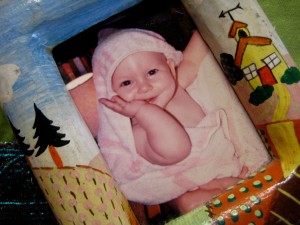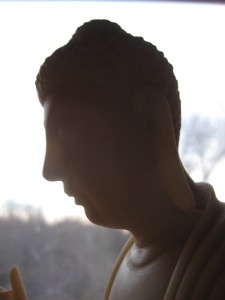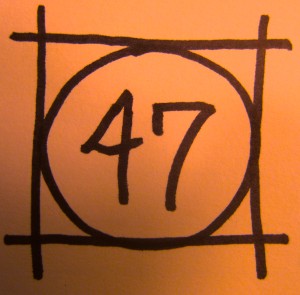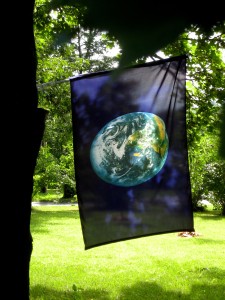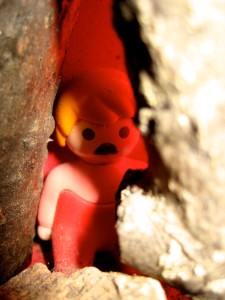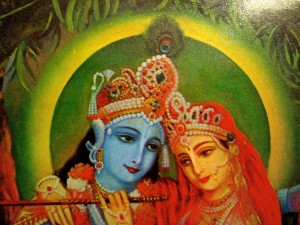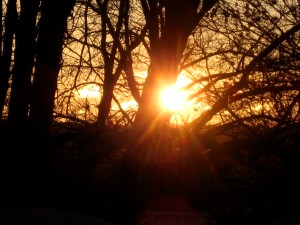
– Photo by Jan Ketchel
Carl Jung broadened the scope of who we are as human beings by introducing us to the Collective Unconscious, a vast region within ourselves that we share in common with all human beings, in fact with the entire planetary being, planet Earth.
Earth is a living being whose survival is ensured by a powerful governing body that Jung defined as the Archetypes of the Collective Unconscious. All human beings are equally impacted by these governing forces that emanate from the deep unconscious of the planetary being Earth, of whom we are all a part while in human physical form.
Archetypes are rules and definitions existing independently of human beings. Preceding our personal selves, they shape our perceptions, interpretations, emotions, and actions in each moment of our lives, inhibiting our ability to be present in the purity, in the actual truth of each moment.
In a dream, Jan and I go to visit my long-deceased mother in her apartment on a holiday. She has been ill, physically incapacitated and limited in movement. I suggest immediately that we go out to eat. This is a visit to Mother who must be honored as special, treated royally on this day of celebration.
Jan says, “No. Ask her if she really wants to go out.” As suggested, I ask Mother. She says no. She’s relieved at not having to rise to the occasion. Relief for all.
The dream illustrates how the archetype Mother precedes the reality and the true physical disposition of the human being who resides in the apartment. The archetype demands reverence, honoring, special action, excitement, and celebration. The human person needs only rest.
Archetypes generate fear, anger, love, anxiety and awe. Archetypes define life and judge our ability to do the right thing. This dream clearly illustrates how the archetypes of Mother and Child take over the feelings and expectations of an encounter, so removed from the actual needs of the moment.

– Photo by Jan Ketchel
Archetypes correspond with chakras. The first two chakras, the root and the sex chakra, are concerned with individual survival and survival of the species via copulation. The planetary being, Earth, has control of the chakras around these issues to ensure its own survival. Two archetypes at this level are the Child and the Soul Mate.
The child archetype evokes very powerful emotions of protection in adults, as they see in the child ultimate vulnerability and innocence. The helplessness and fragility in the newborn and young child evokes the necessary responses from caretakers, spurring them to make great sacrifices in their own lives and attend to the survival needs of these deeply dependent beings. Failure to thrive by a young innocent life can evoke the most powerful sadness in adults, as they find themselves powerless to assist the failing child.
The healthy child archetype serves to spur the core survival needs of new life on Earth. However, too often the child archetype continues to govern beyond necessity and when this happens the opportunity to become an independent autonomous being is delayed or totally denied. In such cases, the child archetype rules well past its usefulness, resulting in a being who is ever-dependent on others for their survival.
Inwardly, the child archetype can distort one’s relationship with one’s own inner child. When the archetypal child takes over it can evoke an overwhelming sadness that induces utter despondency in a bottomless pit of helplessness. Sometimes we may be tricked into thinking we must release our sadness in a great catharsis of tears, expecting relief and healing, only to discover that the wound never heals. This is not human activity, this is the child archetype ever-extracting our energy, keeping us in the grip of powerlessness and woundedness.
We must vehemently stand up to this archetype and shoo it away if we are ever to be able to take hold of our will and achieve adult autonomy in life. If we are ever to develop mature relationships with our families we must break away from the rudimentary archetypes that govern family relationships. Our spiritual development requires that we all become independent equal beings, no matter what our roles once were within the family. We must grow up to become mature adult peers facing the same destiny: death and preparation for what comes next.
The soul mate archetype at the second chakra level is ruthlessly interested in having us hook up and make babies. The power of the sexual instinct under the rulership of the archetype controls most individuals for the better part of their lives. If people are completely honest, the drive for sex and children dominates life from puberty through midlife.

– Photo by Jan Ketchel
Most relationships shine with promise in the beginning, sprinkled with the fairy dust of the soul mate archetype. Post-coitus, and particularly post-children, the archetype deserts a couple as its job is done. There’s nothing in the archetypal program beyond coitus. If you want a mature relationship you’re on your own. Many relationships break up at this point, partners split, often to be drawn once again, by the reactivated archetype, to feel the entitlement of promised magic and wholeness projected onto yet another.
I recently recalled a haunting song that I always felt stirred the soul mate archetype, Wicked Game by Chris Isaaks, a brooding song of archetypal projected love. I found a video that he made for the song on Youtube, one I’d never seen. I include it here —Wicked Game— as it is a wonderful exposition of the powerful draw of the archetype, a man possessed, a woman responding but clearly merely playing a part. There is no personal relationship here. The archetype is a witch’s brew—Watch out!
I recall in my twenties how overwhelmed I was by the soul mate archetype, by the flood of women in their summer attire as I moved about Manhattan. One day, I realized I was exhausted by the time I got to work at 9 a.m. from the unending stream of stimulation! I decided to fight back, to break the slavery I was caught in by an archetype bent on taking over my life.
From that day on I blurred my vision whenever I detected a woman approaching from afar. After about six months I’d completely broken the spell! I allowed my eyes to go in focus once again and realized: I just don’t have to look! The archetype never again exerted its power over me as it once did. I was able to see woman as person, period!

– Photo by Chuck Ketchel
The archetypes at the first two chakras are nature at its fundamental best. However, as we ascend to the heart chakra we discover that these same archetypes exist at a spirit level, beyond the domain of the planetary being Earth. Soul mate at the heart level is a genuine outpouring of compassion and love for another, a deeper appreciation for who the other is as a person and a partner. At the highest level the soul mate archetype guides to merge with our own soul in enlightenment. Similarly, the child archetype at the highest level brings us to the truth and innocent essence of who we are as we shed our egos in preparation for merger with our divine selves.
To rise to the spiritual heights, we must pass through and engage the archetypes at the level of the first two chakras, but we must refuse their dominance if we are ever to reach our spiritual completion and move beyond our cycles of bondage to reincarnated Earth lives and move on to new adventures in infinity.
Focused on moving on up,
Chuck


